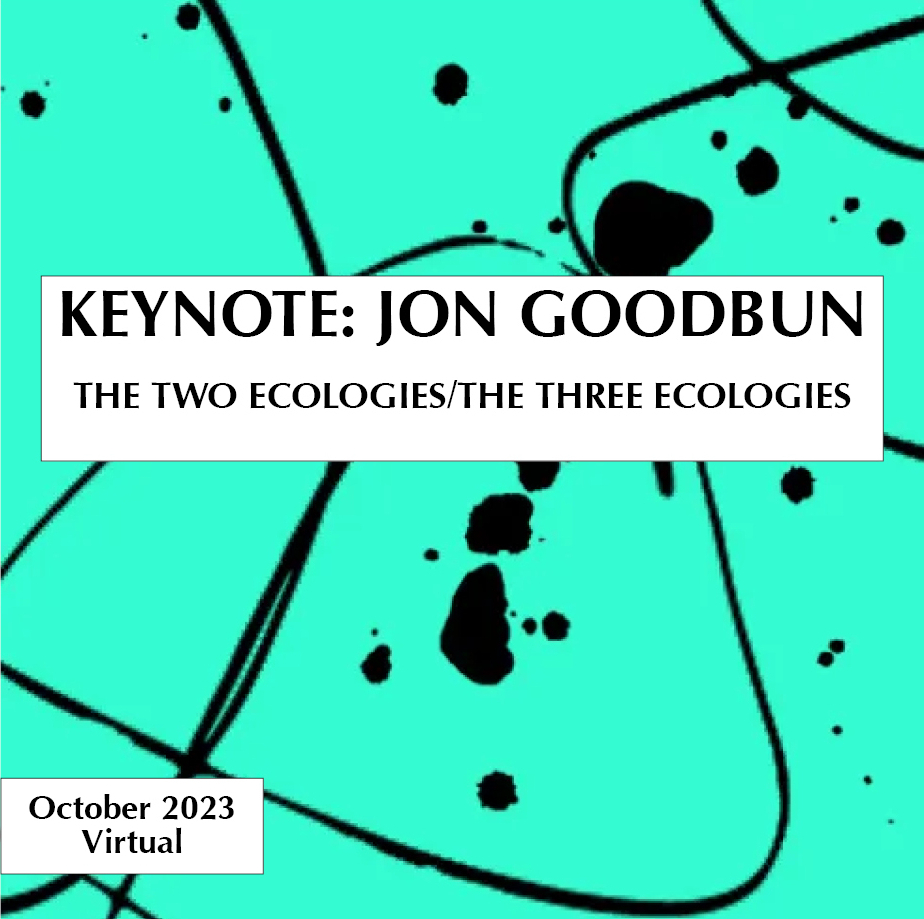/ Events: External Events
The Two Ecologies /The Three Ecologies
What does it mean to talk about a lake as a semio-ecological entity? At stake in this claim is a much bigger claim: that there exist all kinds of non-human and more-than-human ecological intelligences or eco-mental systems. These eco-mental systems not only include other animals and plants, but they also exist as extended complex assemblages or holobionts, such as rivers, mountains, forests, lakes and cities. These ecological systems regulate themselves and interact using language-like responses to differences (i.e. signs) in their environments and thus can be termed “semio-ecological.” Some of these eco-mental systems, such as us humans and most animals (as we all surely agree by now), have conscious minds, even if we are not all self-conscious in the same ways. Although many other eco-mental systems are unlikely to be conscious at all and certainly do not produce the same kinds of self-consciousness that the human-brain-in-a-body-in-a-social environment-in-a-wider-web-of-life may produce, they still embody cognitive and semiotic processes. Therefore, we might legitimately ask how forests or cities “think”, even if we don’t believe they are self-conscious.
Significantly, these ecological intelligences are not always only “others” to us. One of the claims made by extended mind theorists of various kinds is that we (and other minds) are constantly extending ourselves into and co-incorporating each other’s minds, bodies and environments/worlds (Goodbun, 2011). Freudian analysis recognised that our conscious selves emerge from a much bigger unconscious mind, which includes all of the non-conscious or not-always-conscious processes of our own brain-in-body system. But it seems to me, as the ecological anthropologist Gregory Bateson argued, that we also need to turn Freudian thinking inside-out. Many of our unconscious processes are not only outside of the brain, but they are even outside of the body, extending through both our semiotic and metabolic relations with each other and a wider web- of-life and material-energetic relations.
Thus Bateson argued that we should think of lakes and cities as ecological beings which we are both a part of and which are also a part of us, suggesting various paradigms for observing, working with and thinking about such extended eco-mental assemblages. Perhaps most well-known, albeit indirectly via Felix Guattari (1989), is the Three Ecologies model. I have shown elsewhere (Goodbun, 2022a) how Guattari, in his “ecosophy” project, played with and developed Bateson’s aesthetico-epistemological framing of three interacting ecological systems: the cognitive organism, that organism’s relationship to its collective social ecology, and both of those systems’ relations to each other and to the wider web-of-life. But here I want to start with another framework for thinking about ecological systems we can uncover in Bateson’s work, which I call “the two ecologies”.
There are two distinct kinds of ecological entities that come into view depending on whether we take a bio-energetic approach to ecology or an informational-semiotic approach. The bio-energetic approach tends to measure quantities of matter and energy moving through a system and measures those quantities at the boundaries of the organisations (organisms) it observes: it sees an ecology of discrete, autopoietic bounded organisms in metabolic relationships with their environment. There is another ecological view of the very same interacting systems, which focuses on the relationships running transversally through and across organised assemblages of various kinds. We see the same underlying flows but, this time, perceive their patterns of relation such that the autopoietic boundaries recede from view, and instead, we foreground sympoietic networks of biosemiotic communications.
Venue: Toronto, CAN | ONLINE
Date: October 6–20, 2023


